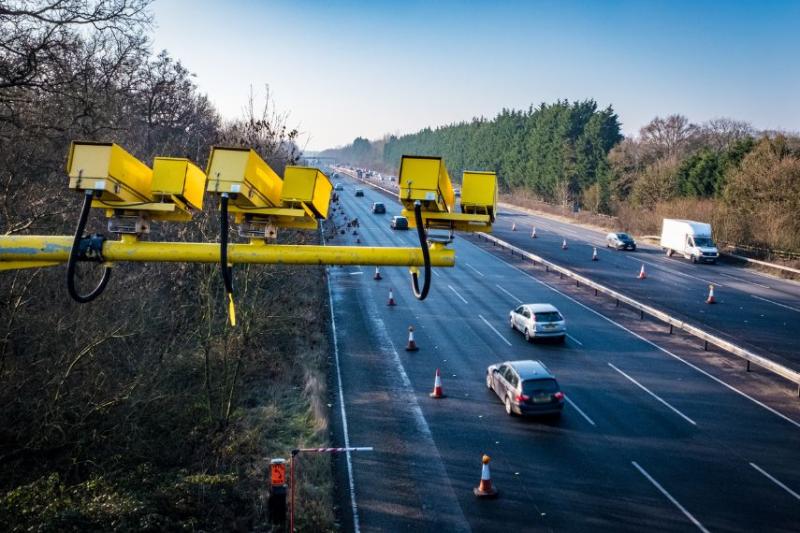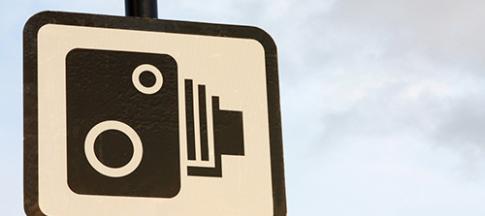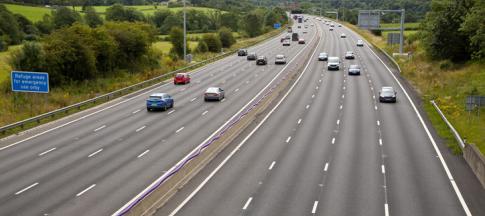
Speed cameras have been around since the early ‘90s – and safe to say, they’ve always divided drivers’ opinions.
Whatever your views are, speed cameras are really important for keeping our roads safe.
We’re here to separate the facts from the myths to make sure you stay in the know and on the right side of the rules!
Why do we need speed cameras?
The Department for Transport found in 2024, 43% of drivers went over the speed limit on 30 miles per hour roads – and 44% on motorways.
The reality is, drivers can’t react as quickly if they’re speeding.
And that could mean dangerous driving, accidents and worst-case scenario, people could get seriously hurt. Not just the drivers themselves, but pedestrians and passengers too.
Speed cameras are usually put in spots where drivers are known to speed, or where there are often accidents.
The cameras can put people off speeding in the first place, which is the best outcome. But it’s also a way to catch drivers who break the law and put other people in danger.
Most cameras in the UK are set up and monitored by partnerships between regional authorities and the police.
The money from speed camera fines often goes back to those authorities to fund local schemes.
What are the different types of speed cameras?
There are a few different types of speed cameras.
Fixed cameras
The most common type of speed cameras are the yellow and grey machines you see by the side of busy roads.
These fixed cameras are either rear-facing (the Gatso) or forward-facing (the Truvelo).
Forward-facing cameras take a picture of both the number plate and the driver, which means it can be easier to find and fine speeders.
Mobile camera
Mobile speed cameras are often used on motorways and busy roads.
They’re usually run by local police, who sit in vans and cars by the road and use radar guns to check people’s speeds.
Average speed cameras
This type of camera records a time stamp when you drive between two cameras. It uses this to calculate your average speed.
They’re usually found on motorways, especially when there are roadworks going on.
Variable speed cameras
Variable speed cameras are usually used on smart motorways.
They’re used to help prevent traffic and congestion but aren't turned on all the time.
Can I find out where speed cameras are?
There are different websites that can help you search for any fixed camera locations in your area, or anywhere you’re planning to drive through.
If you’re looking to find out where any are before you set off, many speed camera partnerships (police and local councils) will publish where they’ll be online.
Is there a way to detect speed cameras when I’m on the move?
Yes! Speed camera detectors are usually now built into SatNavs and your phone’s navigation app. Some dash cams even have them too.
You can also buy physical speed camera detectors from car maintenance shops, like Halfords.
It’ll alert you by giving a verbal warning or making a sound if a speed camera is coming up.
What’s the penalty for speeding?
The minimum penalty for speeding is a £100 fine and three penalty points added to your licence.
You could be disqualified from driving if you get 12 or more penalty points within three years.
If the police stop you for speeding, they could:
- give you a verbal warning
- give you a Fixed Penalty Notice – you'll need to pay the fine, or you can go to court to appeal
- order you to go to court – you’ll get a letter explaining what to do
The ‘10% rule’ – fact or fiction?
It’s true that some speed cameras give slight leeway to drivers who are driving only very slightly above the speed limit.
But it doesn’t mean you can drive 10% above the speed limit every single time and not get any fines.
This is particularly true for mobile speed cameras, as it’s down to the judgement of the police officer using it at the time to decide whether to fine you.
Basically, the best advice is to not speed and make sure you’re driving safely. That way, you’ll never run into any issues with speed cameras or fines. In fact, you might find you don’t even notice they’re there.


